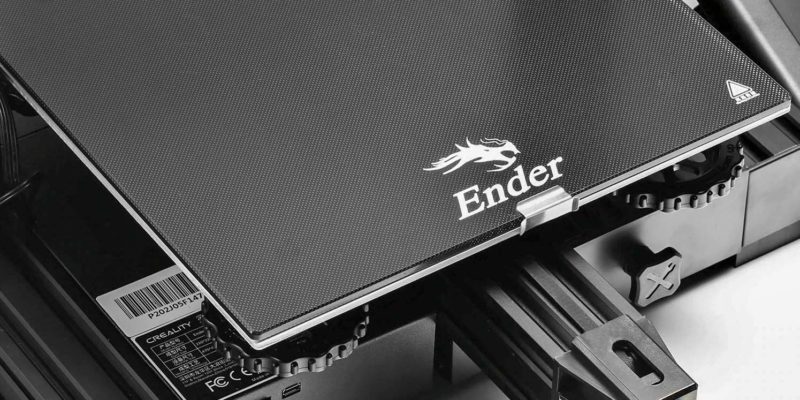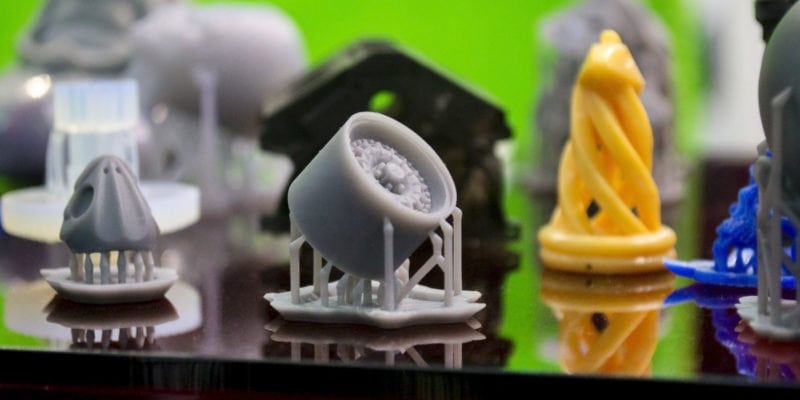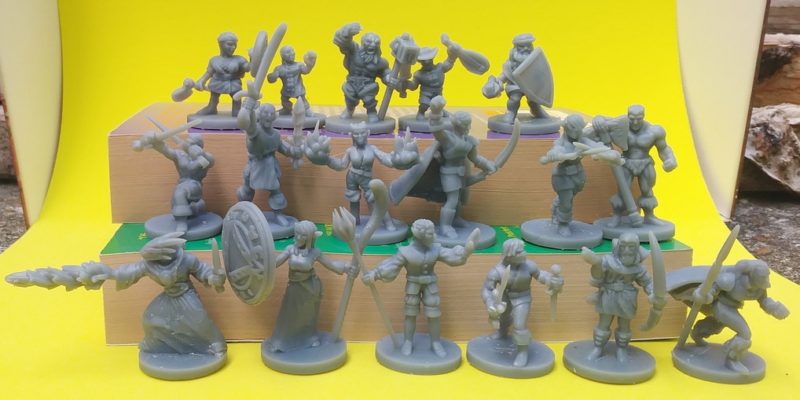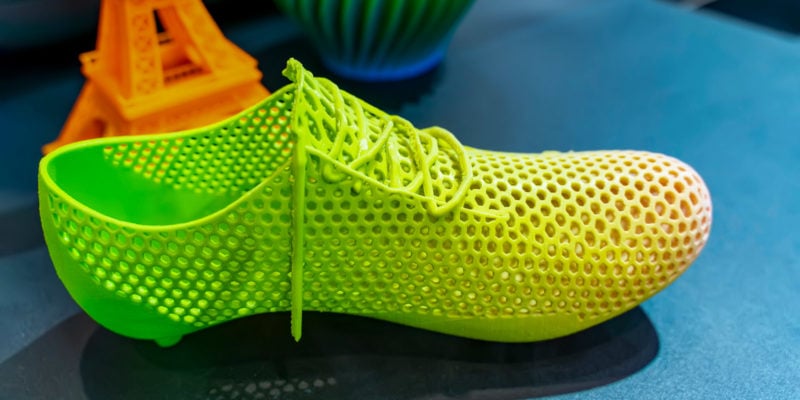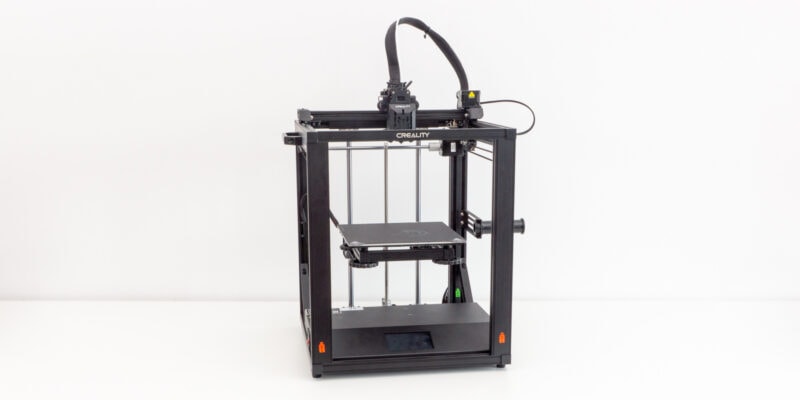FDM 3D printing is a manufacturing technology in which a 3D printer lays molten plastic material in layers to create an object. It is also known as additive manufacturing because material is being added to build something, instead of it being removed from a workpiece.
What exactly is the Fused Deposition Modeling (FDM) process in 3D printing? How does it work? Is it the standard in 3D printing manufacturing industries? Is it a new technology? Questions like these are fairly common with beginners in 3D printing.
In this article, we’ll focus on understanding FDM. We’ll go over its history, how it works, its applications, the materials used, and the future that lies ahead. The goal is to get you acknowledged with everything related to FDM so that all that is left for you is to experience and experiment with it.
History
You would be easily mistaken to think that 3D printing is a recently invented manufacturing technology. However, it was actually invented in the 1980s.
Stereolithography (SLA) 3D printing was the first technology, developed in the early 80s. Later came Selective Laser Sintering (SLS), and towards the end of the 80s, S. Scott Crump co-founded Stratasys along with his wife and applied for the first-ever patent for FDM 3D printing.

In 1992, Stratasys received the patent on FDM, and this marked the beginning of commercial and individual FDM 3D printing. Then in the 90s, 3D printing flourished amongst industries and Stratasys truly established itself as a pioneer in the 3D printing industry.
Following that, in the 2000s, the RepRap movement and the expiry of FDM 3D printing patents democratized the 3D printing technology. This made it possible for anyone to build their own 3D printers. Companies such as Makerbot, Prusa 3D, and Ultimaker were the ones who truly brought 3D printing to the masses.
What is FDM 3D Printing?
Fused Deposition Modeling (FDM) 3D printing or sometimes also known as Fused Filament Fabrication (FFF) is an additive manufacturing process. In this, a nozzle extrudes hot molten plastic material on a build platform. The nozzle selectively lays this molten plastic in layers, on top of each other, to create an entire 3D object.
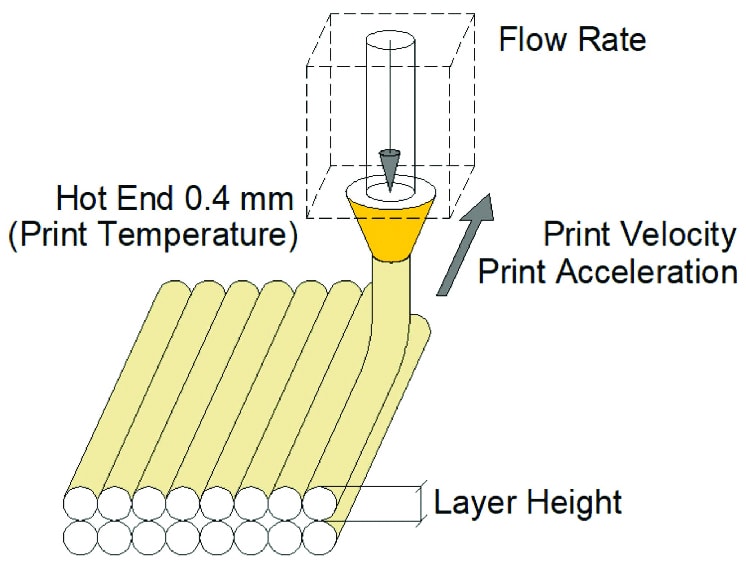
FDM 3D printing is probably the most widely known kind of 3D printing, mainly due to its ease of use. The machines in FDM 3D printing, also known as 3D printers, are relatively cheap and easy to operate. These 3D printers come in all shapes and sizes with different features.
FDM printers use thermoplastic as a material. This plastic becomes soft when it is heated and turns hard again when it is cooled. PLA (Polylactic Acid) is the most commonly used thermoplastic, as it is easy to work with and has good material properties. Other thermoplastics, such as ABS, PETG, Polycarbonate, Nylon, are also used fairly often.
A 3D printer and plastic materials form the basis in any 3D printing setup. However, the most fascinating part about FDM is the ease with which it all comes together to create an actual 3D printed part.
How Does FDM Work?
FDM 3D printers consist of four basic systems – a motion system for movement, an extrusion system for extruding filament, a heating system for melting the material, and a 3D printer controller board for controlling all components.
The construction of an FDM 3D printer is such that it has free motion in at least 3 axes, X, Y, and Z. The X and Y axes control the lateral movement while the Z-axis governs the vertical movement.
This freedom of motion can be achieved with various configurations. For example, there are FDM 3D printers with a Cartesian configuration, but also CoreXY, Delta, Polar, and robotic arms.
As for the material, the thermoplastic is fed to the 3D printer as a spooled filament. The extruder pushes the filament till it reaches the hotend. The hotend then heats the plastic up to its melting point and extrudes the material out through the nozzle.
The nozzle deposits this hot, thread-like filament on the build platform layer by layer. The temperature of the extruded material in combination with the hot nozzle causes the subsequent layers to fuse and form a solid 3D-printed part. Hence the name of the technology, Fused Deposition Modeling.
What is FDM 3D Printing Used for?
FDM 3D printing is highly flexible, and hence it has found its way in a lot of sectors. Manufacturing, rapid prototyping, medical, cosplays, personalized gifting, and even in schools. All these sectors use FDM 3D printing in many ways to solve various problems.
Rapid Prototyping
Prototyping is a crucial stage in any product’s design cycle. And with many iterations taking place throughout the design process, it becomes important to save time on prototypes. Here, FDM 3D printers give the flexibility to print a wide variety of parts quickly and still yield a high-quality output for testing.
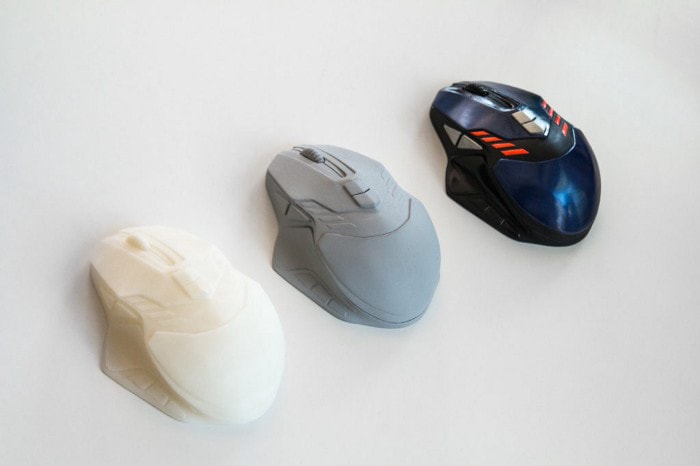
Manufacturing
In the manufacturing sector, FDM 3D printers are used to produce custom-built tools, molds, and end-use components. High-performance plastics such as PEEK, Ultem, PEI, and Polypropylene are used to produce high-quality products. There are even FDM 3D printers that use metal-infused plastic filaments to create end components.
Education
FDM 3D printers are perfect for schools and colleges for a whole variety of projects. This is because they are very cheap compared to other kinds of 3D printers. They are safe and easy to operate and maintain. For courses such as designing, architecture, and engineering, they are a great choice.
Personal
Back in the day, FDM 3D printers were limited to only professional work and small-scale industries. However, now that 3D printing has become cheaper and accessible to anyone, many people have started using it as a hobby. You can use it to create cosplays, toys, game models, action figures, and a lot more.
Common Materials
PLA
PLA (Polylactic acid) filament is the plastic material of choice for FDM 3D printing. It is biodegradable, easy to work with, and doesn’t react to temperature differences as drastically as other materials. PLA is obtained from cornstarch and is a relatively cheap 3D printing material.
Another benefit of using PLA is that your 3D printer does not need a heated build platform. PLA also melts at relatively low temperatures, usually between 190-210°C. However, it has a low resistance to heat and it can get brittle when exposed to high humidity. PLA is more suitable for indoor objects that are meant as demo- or showpieces.
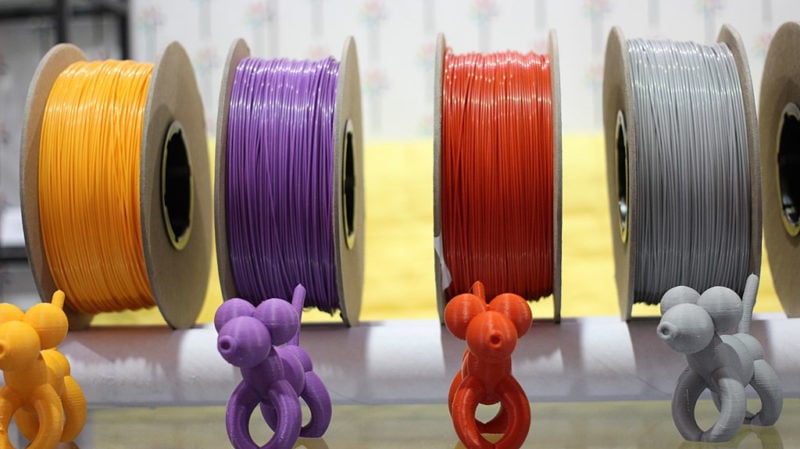
ABS
ABS (Acrylonitrile Butadiene Styrene) was one of the first FDM 3D printing thermoplastics. Even before FDM printing it was already a well-established industrial thermoplastic. You can find ABS in a lot of mobile phones and automotive components. Even LEGOs are made of ABS!
It has a melting temperature of 200°C and is often extruded around 215-230°C. The benefits of ABS are that it has a high temperature resistance and it can sustain impact loads with ease. It is tough and easy to polish, making it a suitable material for many prototype applications. However, as even the best ABS filament tends to warp, a heated build platform is mandatory when 3D printing it.
PETG
PETG (Polyethylene Terephthalate Glycol) is a material that combines the best of both PLA and ABS materials. The G stands for Glycol, which is used to reduce the overheating issues associated with PET. Glycol makes the material more suitable and malleable for 3D printing.
PETG is a completely recyclable material with high impact resistance and good hardness and chemical resistance. It has an extrusion temperature of 220-260°C and requires an all-metal hot end to 3D print efficiently. Overall, PETG is a great material to use where you need the mechanical properties of ABS without the drawbacks that are associated with it.

PVA
PVA (Polyvinyl Alcohol) is a soft material that is majorly used for support structures in 3D printing. It is highly sensitive to moisture and easily dissolves in water. You can use it as a support material for complex components in which it might not be easy to remove the supports. Its major downsides are that it is an expensive material and it needs to be stored in airtight containers to avoid moisture absorption.
Advantages of FDM Printing
Economical
FDM machines have a much lower 3D printer cost than any other 3D printing technology. There is negligible tooling involved and even the materials are on the cheaper side. Its operating costs are also very low. When you consider the fact that you can reiterate your designs at a fraction of the cost of other methods, FDM’s savings are massive.
Ease of Use
FDM technology is very easy to use, which is one of the reasons you can find these 3D printers in schools. FDM printers are designed such that you need minimal training to get started with them. The printing process itself is relatively safe and straightforward. Even if you do run into issues, there is a ton of community support that helps you troubleshoot your printer.
Material Choices
FDM 3D printing shines with its availability of materials. There are a variety of plastics, composites, and high-performance materials available that can often be used with any FDM printer. For example, you can even find wood-filled and metal-infused filaments. The best part is that all these materials come in lots of different colors and are relatively inexpensive too.
Highly Adaptable
FDM 3D printers come in all shapes and sizes and you can even easily scale your requirements. You can get a budget FDM printer with minimal features for only a couple hundred dollars. If you need maximum performance, high-end industrial FDM printers are where it is at. This adaptability makes FDM printing practical to use in many industries.
Minimal Post Processing
FDM 3D printed parts require minimal post-processing. With the right 3D printer you can use PVA for dissolvable supports, even taking away the need to manually remove supports. If you need a smooth surface finish, you can easily use Acetone smoothing for ABS to get that perfect glossy surface. Compared to SLA and SLS 3D printing, post-processing time with FDM is fairly negligible.
Disadvantages of FDM Printing
Print Quality
The parts produced by FDM 3D printing have a rough surface finish and are often not of high quality. The parts lack the fine details that other 3D printing techniques can produce.
Warping
As FDM 3D printing is a layer-by-layer process, it is easy for these layers to separate and warp or shrink due to temperature differences inside a printed part. Warping is evident in materials such as ABS, Polycarbonate, and Nylon. This warping causes imperfections and can lead to failures in FDM 3D printed parts.
Time
FDM 3D printing is a slow process compared to its counterparts. The time required to print multiple objects scales up as the number of objects increases. This makes the process unsuitable for the mass production of components.
What Does the Future Hold?
Even though it’s been decades since FDM was invented, the true potential of this technology has come forth in the last 10 years only. FDM 3D printing is still in its nascent stages and there is a lot of ground for the technology to cover in the future.
The current stage of FDM 3D printing can be easily compared to the early stage of personal computers in the 1980s. The technology is still growing every day and breakthroughs are being achieved regularly. In the upcoming decades, FDM 3D printing will be fairly common in many industries and might even become the main manufacturing method we use for things like construction.
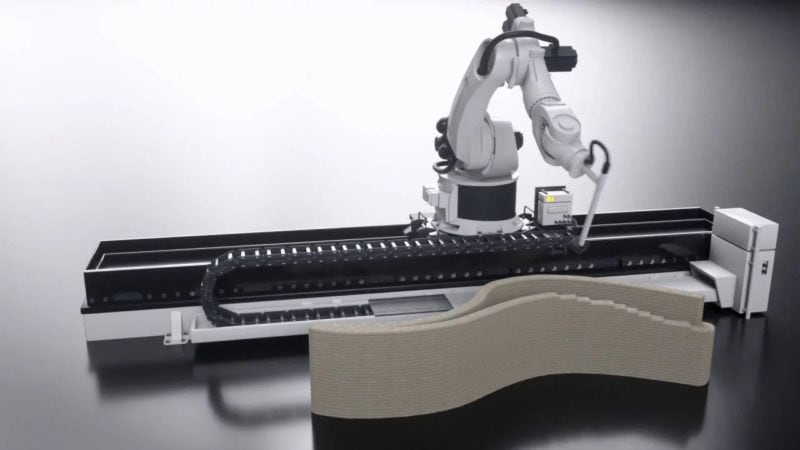
Conclusion
The FDM 3D printing process has come a long way and still has a long way to go in the future. Its ease of use, its adaptability, material choices, and huge support for the FDM technology are surely good things for the growth of this technology.
We’re sure that you now have a much clearer understanding of FDM 3D printing and can be more confident in working with it now. Let us know if you still have any unanswered questions and we’d be happy to assist you with them.




